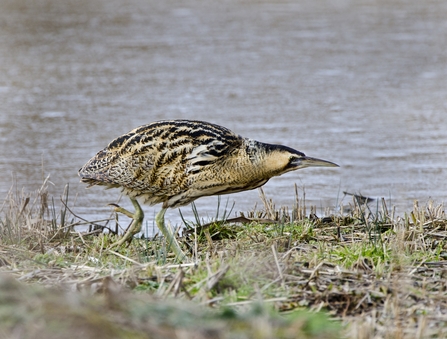A Bittern has been heard making a mating call in Hertfordshire for the first time in recent history following a long-term conservation project to create more reedbed habitat for the protected species.
Prompted by the near-extinction of the Bittern – a member of the heron family - and led by the RSPB, a huge nationwide conservation effort to create more reedbed habitat took place in the early years of the millennium.
Locally, Herts and Middlesex Wildlife Trust worked with conservation partners and from 2004-2010, doubled the area of Bittern-suitable reedbed in the region to 24 hectares – the equivalent of about 33 football pitches.
At Amwell Nature Reserve, there is just over two hectares of reedbed which the Trust manages with its many volunteers. In recent years, the Trust has secured funding from the Environment Agency to further help with the reserve's management, which has enabled contracted works requiring specialist equipment and training to improve the reedbeds. This has provided undisturbed places for Bittern to hunt with the hope that the birds would eventually breed there. That vision came a step closer on 5 March 2024, when a male Bittern was recorded ‘booming’ (a mating call which sounds like the low pitched ‘hooo’ from blowing across the top of a bottle) for the first time at Amwell, signifying that the bird feels the habitat and food is good enough to consider trying to attract a mate there. Its booming has since been repeated and whilst a second bird has not been seen answering it yet, this is being noted as great progress by the wildlife charity and other local conservationists.


